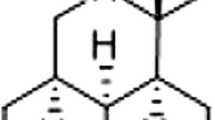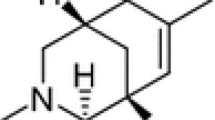Abstract
Nicotinamide (vitamin B3) reduces the infarct volume following focal cerebral ischemia in rats; however, its mechanism of action has not been reported. After cerebral ischemia and/or reperfusion, reactive oxygen species (ROS) and reactive nitrogen species may be generated by inflammatory cells through several cellular pathways, which can lead to intracellular calcium influx and cell damage. Therefore, we investigated the mechanisms of action of nicotinamide in neuroprotection under conditions of hypoxia/reoxygenation. Results showed that nicotinamide significantly protected rat primary cortical cells from hypoxia by reducing lactate dehydrogenase release with 1 h of oxygen-glucose deprivation (OGD) stress. ROS production and calcium influx in neuronal cells during OGD were dose-dependently diminished by up to 10 mM nicotinamide (p<0.01). This effect was further examined with OGD/reoxygenation (H/R). Cells were stained with the fluorescent dye 4,6-diamidino-2-phenylindole (DAPI) or antibodies against anti-microtubule-associated protein-2 and cleaved caspase-3. Apoptotic cells were studied using Western blotting of cytochrome c and cleaved caspase-3. Results showed that vitamin B3 reduced cell injury, caspase-3 cleavage and nuclear condensation (DAPI staining) in neuronal cells under H/R. In addition, nicotinamide diminished c-fos andzif268 immediate-early gene expressions following OGD. Taken together, these results indicate that the neuroprotective effect of nicotinamide might occur through these mechanisms in this in vitro ischemia/reperfusion model.
Similar content being viewed by others
References
Ayoub IA, Lee EJ, Ogilvy CS, Beal MF, Maynard KI. Nicotinamide reduces infarction up to two hours after the onset of permanent focal cerebral ischemia in Wistar rats. Neurosci Lett 259:21–24;1999.
Beal MF, Henshaw DR, Jenkins BG, Rosen BR, Schulz JB. Coenzyme Q10 and nicotinamide block striatal lesions produced by the mitochondrial toxin malonate. Ann Neurol 36:882–888;1994.
Boulu RG, Mesenge C, Charriaut-Marlangue C, Verrecchia C, Plotkine M. Neuronal death: Potential role of the nuclear enzyme, poly (ADP-ribose) polymerase. Bull Acad Natl Med 185:555–563;2001.
Braslavskii VE, Shchavelev VA, Kryzhanovskii GN, Nikushkin EV, Germanov SB. Effect of nicotinamide on focal and generalized epileptic activity in the cerebral cortex. Biull Eksp Biol Med 94:39–42;1982.
Chan PH. Role of oxidants in ischemic brain damage. Stroke 27:1124–1129;1996.
Charriaut-Marlangue C, Margaill I, Represa A, Popovici T, Plotkine M, Ben-Ari Y. Apoptosis and necrosis after reversible focal ischemia: An in situ DNA fragmentation analysis. J Cereb Blood Flow Metab 16:186–194;1996.
Chen CF, Wang D, Hwang CP, Liu HW, Wei J, Lee RP, Chen HI. The protective effect of niacinamide on ischemia-reperfusion-induced liver injury. J Biomed Sci 8:446–452;2001.
Cole KK, Perez-Polo JR. Poly(ADP-ribose) polymerase inhibition prevents both apoptotic-like delayed neuronal death and necrosis after H2O2 injury. J Neurochem 82:19–29;2002.
Crowley CL, Payne CM, Bernstein H, Bernstein C, Roe D. The NAD+ precursors, nicotinic acid and nicotinamide protect cells against apoptosis induced by a multiple stress inducer, deoxycholate. Cell Death Differ 7:314–326;2000.
Decker P, Muller S. Modulating poly (ADP-ribose) polymerase activity: Potential for the prevention and therapy of pathogenic situations involving DNA damage and oxidative stress. Curr Pharm Biotechnol 3:275–283;2002.
Eliasson MJL, Sampei K, Mandir AS, Hurn PD, Traystman RJ, Bao J, Pieper A, Wang ZQ, Dawson TM, Snyder SH. Poly(ADP-ribose) polymerase gene disruption renders mice resistant to cerebral ischemia. Nat Med 3:1089–1095;1997.
Ellis RE, Yuan JY, Horvitz HR. Mechanisms and functions of cell death. Annu Rev Cell Biol 7:663–698;1991.
Endres M, Wang ZQ, Namura S, Waeber C, Moskowitz MA. Ischemic brain injury is mediated by the activation of poly(ADP-ribose) polymerase. J Cereb Blood Flow Metab 17:1143–1151;1997.
Fujimura M, Morita-Fujimura Y, Kawase M, Copin JC, Calagui B, Epstein CJ, Chan PH. Manganese superoxide dismutase mediates the early release of mitochondrial cytochrome C and subsequent DNA fragmentation after permanent focal cerebral ischemia in mice. J Neurosci 19:3414–3422;1999.
Fujimura M, Tominaga T, Yoshimoto T. Nicotinamide inhibits inducible nitric oxide synthase mRNA in primary rat glial cells. Neurosci Lett 228:107–110;1997.
Gale EA. Theory and practice of nicotinamide trials in pre-type 1 diabetes. J Pediatr Endocrinol Metab 9:375–379;1996.
Gorman AM, Bonfoco E, Zhivotovsky B, Orrenius S, Ceccatelli S. Cytochrome c release and caspase-3 activation during colchicine-induced apoptosis of cerebellar granule cells. Eur J Neurosci 11:1067–1072;1999.
Grynkiewicz G, Poenie M, Tsien RY. A new generation of Ca2+ indicators with greatly improved fluorescence properties. J Biol Chem 260:3440–3450;1985.
Gubits RM, Burke RE, Casey-McIntosh G, Bandele A, Munell F. Immediate early gene induction after neonatal hypoxia-ischemia. Brain Res Mol Brain Res 18:228–238;1993.
Hou RC, Huang HM, Tzen JT, Jeng KC. Protective effects of sesamin and sesamolin on hypoxic neuronal and PC12 cells. J Neurosci Res 74:123–133;2003.
Huang HM, Ou HC, Xu H, Chen HL, Fowler C, Gibson GE Inhibition of alpha-ketoglutarate dehydrogenase complex promotes cytochrome c release from mitochondria, caspase-3 activation, and necrotic cell death. J Neurosci Res 74:309–317;2003.
Huang Z, Huang PL, Panahian N, Dalkara T, Fishman MC, Moskowitz MA. Effects of cerebral ischemia in mice deficient in neuronal nitric oxide synthase. Science 265:1883–1885;1994.
Huang ZS, Chiang TL, Lee TK. Stroke prevalence in Taiwan. Findings from the 1994 National Health Interview Survey. Stroke 28:1579–1584;1997.
Hung TP, Chen ST. Cerebral hemorrhage in Taiwan (in Chinese). J Formos Med Assoc 92:S161-S168;1993.
Kamat JP, Devasagayam TP. Nicotinamide (vitamin B3) as an effective antioxidant against oxidative damage in rat brain mitochondria. Redox Rep 4:179–184;1999.
Klaidman LK, Mukherjee SK, Hutchin TP, Adams JD. Nicotinamide as a precursor for NAD+ prevents apoptosis in the mouse brain induced by tertiary-butyl hydroperoxide. Neurosci Lett 206:5–8;1996.
Kumar S. ICE-like proteases in apoptosis. Trends Biochem Sci 20:198–202;1995.
Lee MM, Hseih MT, Kuo JS, Yeh FT, Huang HM. Magnolol protects cortical neuronal cells from chemical hypoxia in rats. Neuroreport 9:3451–3456;1998.
Lewen A, Matz P, Chan PH. Free radical pathways in CNS injury. J Neurotrauma 17:871–890;2000.
Lin SH, Vincent A, Shaw T, Maynard KI, Maiese K. Prevention of nitric oxide-induced neuronal injury through the modulation of independent pathways of programmed cell death. J Cereb Blood Flow Metab 20:1380–1391;2000.
Mokudai T, Ayoub IA, Sakakibara Y, Lee EJ, Ogilvy CS, Maynard KI. Delayed treatment with nicotinamide (vitamin B3) improves neurologic outcome and reduces infarct volume after transient focal cerebral ischemia in Wistar rats. Stroke 31:1679–1685;2000.
Mukherjee SK, Klaidman LK, Yasharel R, Adams JD Jr. Increased brain NAD prevents neuronal apoptosis in vivo. Eur J Pharmacol 330:27–34;1997.
Oorschot DE, Black MJ, Rangi F, Scarr E. Is Fos protein expressed by dying striatal neurons after immature hypoxic-ischemic brain injury? Exp Neurol 161:227–233;2000.
Pacifici RE, Davies KJ. Protein, lipid and DNA repair systems in oxidative stress: The free-radical theory of aging revisited. Gerontology 37:166–180;1991.
Rheaume E, Cohen LY, Uhlmann F, Lazure C, Alam A, Hurwitz J, Sekaly RP, Denis F. The large subunit of replication factor C is a substrate for caspase-3 in vitro and is cleaved by a caspase-3-like protease during Fas-mediated apoptosis. EMBO J 16:6346–6354;1997.
Sakakibara Y, Mitha AP, Ogilvy CS, Maynard KI. Post-treatment with nicotinamide (vitamin B3) reduces the infarct volume following permanent focal cerebral ischemia in female Sprague-Dawley and Wistar rats. Neurosci Lett 281:111–114;2000.
Szabo C. DNA strand breakage and activation of poly-ADP ribosyltransferase: A cytotoxic pathway triggered by peroxynitrite. Free Radic Biol Med 21:855–869;1996.
Szabo C, Dawson VL. Role of poly(ADP-ribose) synthetase in inflammation and ischaemia-reperfusion. Trends Pharmacol Sci 19:287–298;1998.
Takahashi K, Greenberg JH, Jackson P, Maclin K, Zhang J. Neuroprotective effects of inhibiting poly(ADP-ribose) synthetase on focal cerebral ischemia in rats. J Cereb Blood Flow Metab 17:1137–1142;1997.
Wallis RA, Panizzon KL, Girard JM. Traumatic neuroprotection with inhibitors of nitric oxide and ADP-ribosylation. Brain Res 710:169–177;1996.
Wan FJ, Lin HC, Kang BH, Tseng CJ, Tung CS. D-amphetamine-induced depletion of energy and dopamine in the rat striatum is attenuated by nicotinamide pretreatment. Brain Res Bull 50:167–171;1999.
Wang MJ, Lin WW, Chen HL, Chang YH, Ou HC, Kuo JS, Hong JS, Jeng KCG. Silymarin protects dopaminergic neurons against lipopolysaccharide-induced neurotoxicity by inhibiting microglia activation. Eur J Neurosci 16:2102–2112;2002.
Yang J, Klaidman LK, Chang ML, Kem S, Sugawara T, Chan P, Adams JD. Nicotinamide therapy protects against both necrosis and apoptosis in a stroke model. Pharmacol Biochem Behav 73:901–910;2002.
Yang J, Liu X, Bhalla K, Kim CN, Ibrado AM, Cai J, Peng TI, Jones DP, Wang X. Prevention of apoptosis by Bcl-2: Release of cytochrome c from mitochondria blocked. Science 275:1129–1132;1997.
Author information
Authors and Affiliations
Rights and permissions
About this article
Cite this article
Shen, CC., Huang, HM., Ou, HC. et al. Protective effect of nicotinamide on neuronal cells under oxygen and glucose deprivation and hypoxia/reoxygenation. J Biomed Sci 11, 472–481 (2004). https://doi.org/10.1007/BF02256096
Received:
Accepted:
Issue Date:
DOI: https://doi.org/10.1007/BF02256096




